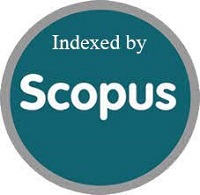Uji Validitas Internal, Validitas Eksternal, Dan Reliabilitas Traumatic Events Questionnaire (TEQ)
DOI:
https://doi.org/10.15408/jp3i.v4i4.9301Keywords:
Trauma, TEQ, Validitas Internal, Validitas Eksternal, ReliabilitasAbstract
Abstract
Traumatic event is an event that makes trauma and resulting a great pressure. Trauma can occur because of the experience of a traumatic event. Traumatic Events Questionnaire (TEQ) is a measurement tool that can be used as an early detection of the experience of the traumatic event. The purpose of this study was to adapt the TEQ in Indonesia. This study used a total of 172 respondents. The method of analysis used is the internal validity items and sub-items, external validity, and reliability by using SPSS 17.0 statistical software. In the external validity, researchers conducted a comparative measure TEQ measuring devices BDI II. From this research it is known that some items are invalid; items number 5, 9, and 12. Based on the calculation of external validity it is known that non-clinical Data have significant value, while the data on clinical results are not significant. The results of calculation of the reliability of the non-clinical data is -0.53, which means very low reliability, whereas the clinical outcome in the data is 0.950, which means very high reliability.
Abstrak
Peristiwa traumatik adalah peristiwa yang membuat trauma dan menghasilkan tekanan besar. Trauma bisa terjadi karena pengalaman traumatis. Traumatic Events Questionnaire (TEQ) adalah sebuah alat ukur yang bisa digunakan sebagai deteksi dini terhadap pengalaman traumatis. Penelitian ini bertujuan untuk mengadaptasi TEQ ke dalam bahasa Indonesia. Jumlah responden pada penelitian ini sebanyak 172 orang. Metode analisis yang digunakan yaitu validitas internal item dan sub-item, validitas eksternal, dan reliabilitas dengan bantuan perangkat lunak statistik SPSS 17.0. pada validitas eksternal, peneliti melakukan pengukuran komparatif TEQ dengan mengukur perangkat BDI II. Hasilnya, ada beberapa item yang tidak valid, yaitu item nomor 5, 9, dan 12. Berdasarkan perhitungan validitas eksternal, diketahui bahwa data non klinis memiliki nilai signifikan. Sementara itu, data klinis menunjukkan hasil tidak signifikan. Reliabilitas data non klinis yaitu -0.53, yang artinya rendah. Sedangkan reliabilitas dan klinis yaitu 0.950, yang bermakna tinggi.
References
DAFTAR PUSTAKA
Anastasi, A., & Urbina, S. (1997). Psychological testing (7th ed). Upper Saddle River, NJ: Prentice-Hall.
Bados, A., Toribio, L., & Grau, G. (2008). Traumatic events and tonic immobility. The Spanish Journal of Psychology, 11 (2), 516-521.
Berg, B. L., DeVito, J. A., Glesne, C., & Verwijmeren, J. (2010). Qualitative research; Compiled from: Qualitative research methods for the social sciences. Harlow: Pearson.
Diagnostic and statistical manual of mental disorders: DSM-III-R. (3rd ed.). (1987). Washington, DC: American Psychiatric Association.
Elhai, J. D., Groy, M. J., Kashdan. T. B. & Franklin C. L. (2005). Which instruments ore most commonly used to assess a survey of traumatic stress professionals. Journal of Traumatic Stress, 8 (5).
Goodman, L. A., Corcoran. C., Turner, K., Yuan, N., & Green, B. L. (1998). Assesing traumatic event exposure: General issues and preliminary finding for the stressful life events screening questionnaire. Journal of Traumatics Stress, 11(3).
Guilford, J. P. (1959). Psychometric Methods (2nd ed). New York: Mc-Graw Hill Bool Company, Inc.
Howwit, D., & Cramer, D. (2011). Introduction to research methods in psychology (3rd ed). England: Pearson Education Limited.
Kumar, R. (1999). Research methodology: A Step By Step Guide for Beginners (Reprint. ed.). London: Sage Publications Ltd.
Maslim R. (2001). Buku saku diagnosis gangguan jiwa rujukan ringkas dari PPDGJ-III. Jakarta: Bagian ilmu Kedokteran Jiwa FK Unika Atma Jaya.
Nevid, J. S., Rathus, S. A., & Greene, B. (2003). Abnormal psychology in a changing world (5th ed). Upper Saddle River, N.J.: Prentice Hall.
Norris, F. H. (1992). Epidemology of trauma: Frequency and impact of different potentially traumatic events on different demographic groups. Journal of consulting and clinical psychology, 60: 409-418.
Orsillo, S. M. (2002). Practitioner’s guide to empirically based measures of anxiety. Kluwer Academic Publisher.
Patel, V. (2001). Buku Panduan Kesehatan Jiwa. Diterjemahkan oleh Ashra Vina. International Medical Corps Indonesia Programme.
Siegel, Sidney. (1994). Statistik nonparametrik untuk ilmu-ilmu sosial. Jakarta: PT. Gramedia Pustaka Utama.
Vrana, S & Lauterbach, D. (1994). Prevalence of traumatic events and post-traumatic psychological symptoms in a nonclinical sample of collage students. Journal of Traumatic Stress, 7 (2).
Vrana, S & Lauterbach, D. (1996). Three studies on the reliability and validity of a self-report measure of post-traumatic stress disorder. Psychological Assesment, 3 (1).
Warmasif. (2007). Gangguan stres pasca trauma. www.warmasif.co.id /kesehatan online/mod.php (diakses: 29 Oktober 2012).



